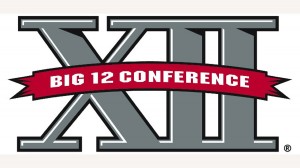Texas keeps the Big 12 alive, thanks to the money
On Tuesday, June 15, the landscape of college football was about to change forever. The University of Texas was to lead three other teams from the Big-12 conference to the Pac-10. They would join fellow Big-12 team, Colorado, to form the first “super” conference in college athletics. This new conference would set a domino effect as other conferences in the NCAA would look to copy what the Pac-10 did. Like the Pac-10, the Big-10 conference earlier in the week added Big-12 school Nebraska, and was in talks with a few schools from the Big East conference. The SEC conference had Texas A&M in their sights to leave the Big-12. It looked as if the Big-12 was going to lose almost all of their teams.
But, before Tuesday, there was the weekend for schools to think things through.
 Already gone were Nebraska and Colorado. The University of Texas, Oklahoma, Oklahoma State, Texas Tech, and Texas A&M were leaving for the Pac-10 and SEC. Left behind in the dying conference were Baylor, Kansas, Kansas State, Missouri, and Iowa State. The five schools were due anywhere between $35-$40 million dollars in penalties already from Nebraska and Colorado leaving and, additionally, would receive the same amount if the other schools would depart as well. The $35-$40 million is a great monetary figure that would help out any of those Universities’ education departments. However, the loss of the competition and television revenue made these schools do everything they could to keep the conference alive.
Already gone were Nebraska and Colorado. The University of Texas, Oklahoma, Oklahoma State, Texas Tech, and Texas A&M were leaving for the Pac-10 and SEC. Left behind in the dying conference were Baylor, Kansas, Kansas State, Missouri, and Iowa State. The five schools were due anywhere between $35-$40 million dollars in penalties already from Nebraska and Colorado leaving and, additionally, would receive the same amount if the other schools would depart as well. The $35-$40 million is a great monetary figure that would help out any of those Universities’ education departments. However, the loss of the competition and television revenue made these schools do everything they could to keep the conference alive.
The University of Texas, however, wanted to run their television channel though. Having this luxury would enable UT to make additional revenue of $20-$25 million yearly. The Pac-10 was telling Texas that they could guarantee them $20 million in television revenue. This made all the sense in the world to leave behind and take their rivalries west.
Then, Texas A&M decided to not commit to the Pac-10. UT was confused, as they thought that all the Texas schools, aside from Baylor, were on board. When they tried to reach A&M’s athletic director, they couldn’t find him. And why could he not be reached? It was because during the biggest decision of the school’s sports future he was away in Idaho for a family reunion. Texas then began to think; how could the Pac-10 pay each of the new 16 teams all $20 million in shared television revenue? Along with Texas A&M now leaving for the SEC instead of the Pac-10, Texas started to reconsider their move to leave.
Monday, June 14, Big-12 commissioner Dan Beebe begins talks with ESPN/ABC television. Beebe had the word of the television giant that they will not opt out of their multi-million dollar deal that expires in 2016. Beebe felt that if he could come back to Texas with this news, maybe he could bring the university back to the Big-12 and save his dying conference. Beebe also told Texas that if they come back to the conference, he will allow them to run their Texas network.
Texas’ athletic director, Deloss Dodds, was all ears about this offer and decided to stay with the conference. He called up the athletic directors from the leaving schools: Oklahoma, Oklahoma State, Texas A&M, and Texas Tech. They all agreed that they would reform the Big-12 into a new 10-team conference, now without a conference championship. The five schools that were left behind, agreed to share the money that Nebraska and Colorado were due to pay for leaving.
For now, everyone is happy since Texas decided to stay at home in the Big-12. Fans of the Big-12 will still have the Red River Shootout between Oklahoma and Texas, the Texas vs. Texas A&M game, and the new rivalry, Texas vs. Texas Tech. If Texas would have jumped to the Pac-10, it would have made history. Instead, Texas took the money and ran back home to the Big-12, where they will stay happy, for now.
By T.J. McAloonLeave a Reply
Popular destinations
- Independent Casinos Not On Gamstop
- Best Non Gamstop Casinos Uk
- Casino Online Nuovi
- Casinos Not On Gamstop
- Casino Sites Not On Gamstop
- UK Casinos Not On Gamstop
- Casino Online
- Casino Online Deutschland
- Non Gamstop UK Betting Sites
- Meilleur Casino En Ligne France
- UK Casino Not On Gamstop
- Non Gamstop Casino Sites UK
- Non Gamstop Casinos
- Melhores Cassinos Online Brasil
- Casino Not On Gamstop
- Casino Sites Not On Gamstop
- Non Gamstop Casinos UK
- Gambling Sites Not On Gamstop
- Best New Slot Sites UK
- Non Gamstop Casino
- Non Gamstop Casino Sites UK
- Non Gamstop Casino
- Non Gamstop Casino
- Betting Sites Not On Gamstop
- Casino Not On Gamstop
- Sites De Paris Sportifs En Belgique







